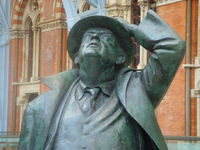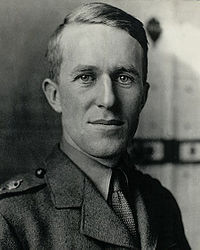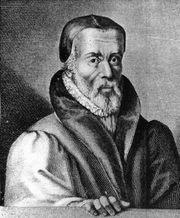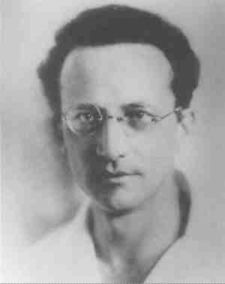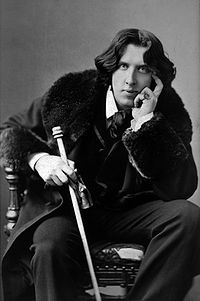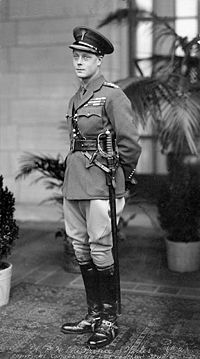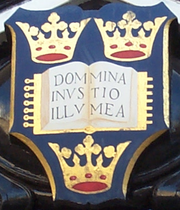Magdalen College, Oxford
| Colleges and halls of the University of Oxford Magdalen College |
||||||||||||
 |
||||||||||||
|
|
||||||||||||
| College name | Magdalen College | |||||||||||
| Latin name | Collegium Beatae Mariae Magdalenae | |||||||||||
| Named after | Mary Magdalene | |||||||||||
| Established | 1458 | |||||||||||
| Sister college | Magdalene College, Cambridge | |||||||||||
| President | Professor David Clary FRS | |||||||||||
| Undergraduates | 395 | |||||||||||
| Graduates | 185 | |||||||||||
|
|
||||||||||||
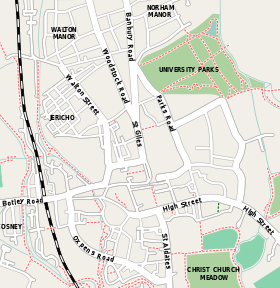 Location of Magdalen College within central Oxford |
||||||||||||
| Homepage | ||||||||||||
| Boatclub | ||||||||||||
_Crest.svg.png) |
||||||||||||
Magdalen College (pronounced /ˈmɔːdlɪn/[1]) is one of the constituent colleges of the University of Oxford in England. As of 2006 the college had an estimated financial endowment of £153 million.[2]
Magdalen College was founded in 1458 by William of Waynflete, Bishop of Winchester.[3] The founder's statutes included provision for a choral foundation of men and boys (a tradition that has continued to the present day) and made reference to the pronunciation of the name of the College in English. Another unrelated college named Magdalen Hall adjacent to Magdalen College eventually became part of Hertford College.[4]
Regarded by some as one of the most beautiful of the Oxford and Cambridge colleges,[5] Magdalen is also one of the most visited. It stands next to the River Cherwell and has within its grounds a deer park and Addison's Walk. Magdalen College School and St. Hilda's College also lie nearby. The large, square Magdalen Tower is a famous Oxford landmark, and it is a tradition since the days of Henry VII that the college choir sings from the top of it at 6 a.m. on May Morning.[5] The college's current president, Professor David Clary FRS, was earlier a Fellow and Senior Tutor at Magdalene College, Cambridge.
Contents |
Grounds
The college has large grounds, close to the city centre. They stretch north and east from the college, and are most of the area bounded by Longwall Street, the High Street (where the porter's lodge is located), and St Clement's.
The Grove (Deer Park)
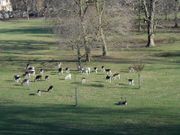
This large meadow occupies most of the north west of the college's grounds, from the New Buildings and the Grove Quad up to Holywell Ford. During the winter and spring, it is the home of a herd of deer. It is possible to view the meadow (and also the deer) from the path between New Buildings and Grove Quad, and also from the archway in New Buildings.
In the 16th century, long before the introduction of the deer, the grove consisted of gardens, orchards, and bowling greens. During the Civil War, it was used to house a regiment of soldiers. At one point in the C19th it was home to three traction engines belonging to the works department of the college.
The Meadow (bounded by Addison's Walk)
.jpg)
This triangular meadow lies to the east of the college, bounded on all sides by the River Cherwell. In the spring, it is filled with the flower Fritillaria Meleagris (commonly known as Snakeshead Fritillary), which gives it an attractive green-purple colour. These flowers grow in very few places, and have been recorded growing in the meadow since around 1785. Once the flowering has finished, the deer are moved in for the Summer and Autumn. In wet winters, some or all of the meadow may flood, as the meadow is lower lying than the surrounding path. All around the edge of the meadow is a tree-lined path, Addison's Walk. It is a beautiful and tranquil walk, favoured by students, dons, and visitors alike. It also links the college with Holywell Ford, and the Fellows' Garden.
The Fellows' Garden

Located to the north east of the Meadow, directly behind the new building of the Oxford Centre for Islamic Studies. This long and (fairly) narrow garden follows the Cherwell to the edge of the University Parks . In spring, the ground is covered with flowers. In summer, there are some flowers, many different shrubs, and the varied trees provide dappled cover from the sun. It is linked to Addison's Walk by a bridge.
Buildings
The Great Tower was built between 1492 and 1509 by William Orchard, and is an imposing landmark on the eastern approaches to the city centre. The hall and chapel were built at similar times, though both have undergone some changes in the intervening years.
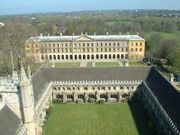
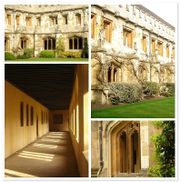
The Cloister or Great Quad was built in 1474-80 (also by Orchard) and has been altered several times since then. In 1822, the north side was in bad shape, and was knocked down while most of the fellows were away from college (only a small group of fellows were in favour of demolishing it). It was rebuilt shortly afterwards. In the early 1900s, renovations were performed, and it was returned to a more mediaeval character. Student rooms were installed in the (very large) roof space in the 1980s.
The New Building was built across a large lawn to the north of the Great Quad in 1733. Its spacious setting is due to the builders' intentions to create an entirely new quad, but only one side was completed. C. S. Lewis had his rooms in this building, and as there are very few student rooms (many being occupied by tutors), they are highly sought after.
The college has four other quads. The irregularly shaped St John's Quad is the first on entering the college, and includes the Outdoor Pulpit and old Grammar Hall. It connects to the Great Quad via the Perpendicular Gothic Founder's Tower, which is richly decorated with carvings and pinnacles and has carved bosses in its vault.
The Chaplain's Quad runs along the side of the Chapel and Hall, to the foot of the Great Tower. St Swithun's Quad and Longwall Quad (which contains the Library) date from the late 19th and early 20th centuries, and make up the southwest corner of the college. The Grove Buildings are the newest, built in the 1990s in a traditional style.
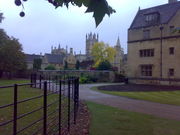
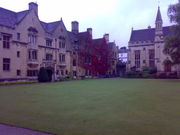
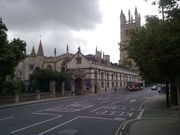
Chapel
The chapel is a place of worship for members of the college and others in the university community and beyond. Its tradition is influenced by the Catholic Revival in the Church of England. Said and sung services are held daily during term. The choir sings Choral Evensong every day except Tuesday. On Sundays, Sung Mass is offered in the morning and Compline (Night Prayer) and Benediction is sung congregationally to plainsong at ten o'clock. Mass is also sung on major holy days.
Choir
Magdalen is one of the three Choral Foundations in Oxford, meaning that the formation of the choir was part of the statutes of the college, the other two choral foundations being New College and Christ Church.
The choir consists of twelve Academical Clerks who are students at the College, and sixteen boys aged seven to fourteen, all of whom have scholarships at Magdalen College School. The school was originally founded for this express purpose but has long since become an independent public school.
The choristers' day begins at 7:30, with an early morning practice before school. There is further practice immediately after school, followed by Choral Evensong six nights a week, in term; the Monday service is sung by the boys only, and the Friday service only by the Academical Clerks. On Saturdays there is an afternoon practice, while on Sundays there is a practice at 09:30 followed by Eucharist, then a further afternoon practice followed by Evensong which ends at 7pm. Most of the boys thus have a longer working day, and a busier weekend, than their parents.
The Choir has numerous College duties as well as a recording and touring schedule. Traditionally the Choir sings at College Gaudies and at other special events throughout the year, as well as performing on social occasions such as Carols by Candlelight before Christmas and the famous May Morning. On this occasion the Choir sings madrigals at 6am from the top of the college bell-tower to the assembled mass of students and townsfolk celebrating in the streets below.
In its long history the choir has had many well known organists, such as Daniel Purcell, Sir John Stainer and Bernard Rose, while past Organ Scholars include Dudley Moore, and past Academical Clerks include John Mark Ainsley, Harry Christophers (founder and director of The Sixteen) and Robin Blaze.
The choir records regularly and In 2005 was nominated for a prestigious Grammy Award for its CD, With a Merrie Noyse, of music by Orlando Gibbons. Other recent works include the BBC's Blue Planet and Paul McCartney's classical piece Ecce Cor Meum.
The former Informator Choristarum (the master and conductor of the choir) was the composer Dr Bill Ives, possibly better known as a former King's Singer. A disc of his music, Listen Sweet Dove, is amongst the choir's latest releases. The College has recently appointed organist Daniel Hyde as Informator Choristarum.
See also List of organ scholars
Centre for the History of Childhood
Centre for the History of Childhood, situated at Magdalen College, is the first institution within the United Kingdom that focuses on studying every interdisciplinary aspect of the history of children from the Greeks and Romans to the present day.[6]
Sport
Rowing
Magdalen held 'Head of the River' between 2004 and 2007. This means it won the Summer Eights competition in each of these years. Summer Eights is the most prestigious university regatta held in Oxford. The Men's 1st Torpid became Head of the River in the 2008 Torpids; in 2009 they dropped two places. The Women's 1st Torpid became Head of the River in 2010.
Drama
Magdalen has drama, organized by the Magdalen Players.
Notable members
Old members who are current Members of Parliament
Five Magdalen alumni were appointed to the new Conservative-Liberal Democrat coalition Cabinet:[7]
- William Hague is the First Secretary of State and Foreign Secretary
- George Osborne is the Chancellor of the Exchequer
- Chris Huhne (a Liberal Democrat) is the Secretary of State for Energy and Climate Change
- Jeremy Hunt is the Secretary of State for Culture, Olympics, Media and Sport
- Dominic Grieve is the Attorney General
Other alumni in Parliament are:
- John Hemming
- John Hutton
- Edward O'Hara
- John Redwood
- Siôn Simon
- Nicholas Boles
Notable students
- Accepted Frewen
- Donald Adamson
- John Mark Ainsley
- James Richard Atkin
- Matthew D'Ancona
- Kenneth Baker
- Julian Barnes
- Sir Eric Berthoud
- John Betjeman
- Al-Muhtadee Billah
- Hugh Boulter
- Ashley Bramall
- George Brandis
- Stephen Breyer
- Peter Brook
- Paul Brough
- Nicolas Browne-Wilkinson, Baron Browne-Wilkinson
- Simon Chesterman
- Harry Christophers
- Wesley Clark
- William Henry Corfield
- Norman Davies
- Gideon Defoe
- Alfred Denning, Baron Denning
- Christopher Derrick
- Lord Alfred Douglas
- Ronald Dworkin
- Fernanda Eberstadt
- John Carew Eccles
- King Edward VIII (attended when Prince of Wales; did not graduate)
- Gareth Evans
- Russ Feingold
- James Fenton
- Howard Walter Florey
- John Florio
- Martha Lane Fox
- Malcolm Fraser
- J. Paul Getty
- Edward Gibbon
- Ben Goldacre
- A. C. Grayling
- William Hague
- Matthew Hale
- Robert Hardy
- John Hemming
- Giles Henderson
- Robert Peverell Hichens
- Ian Hislop
- Alan Hollinghurst
- Albert Hourani
- Charles Bousfield Huleatt
- Brian Inglis
- Benedikt Isserlin
- Michael Jay
- Keith Joseph
- Chris Kamara
- Nicholas D. Kristof
- T. E. Lawrence
- John Lyly
- Robert Macfarlane
- Terrence Malick
- Andrew McNeillie
- Peter Medawar
- David Melamed
- Katie Mitchell
- Dudley Moore
- Vinicius de Moraes
- Desmond Morris
- Douglas Murray
- George Osborne
- Robert Parker
- Henry Phillpotts
- Stephen Potts
- Hormuzd Rassam
- John Redwood
- Robert Robinson
- James Edwin Thorold Rogers
- Henry Sacheverell
- Duncan Sandys
- Sir John Scarlett
- Charles Scott Sherrington
- John Sergeant
- Siôn Simon
- David Souter
- Charles Spencer, 9th Earl Spencer
- Jon Stallworthy
- Andrew Sullivan
- Louis Theroux
- Gerald Thesiger
- Prince Tomohito of Mikasa
- John Turner
- William Tyndale
- King Jigme Khesar Namgyel Wangchuck of Bhutan
- Kevin Webster
- James Whitbourn
- Thomas William Webb
- Oscar Wilde
- George Will
- Swaminathan S. Anklesaria Aiyar
- Lord Frederick Windsor
- George Wither
- Thomas Wolsey
- Simon Woods
- Niall Ferguson
(P. G. Wodehouse attributes a Magdalen undergraduateship to his fictional literary character Bertie Wooster; Tibby, in E. M. Forster's Howards End, is also a Magdalen undergraduate, as is Bridey in Evelyn Waugh's Brideshead Revisited.)
Notable academics/fellows
- Joseph Addison
- Arvind Adiga
- Rev George Booth
- Simon Caney
- Richard Chandler
- Felipe Fernández-Armesto
- Adam Fox
- John Fuller
- E. H. H. Green
- Robert Gunther
- Seamus Heaney
- George Horne
- Robert Latham
- Laurence Dreyfus
- C. S. Lewis
- K. B. McFarlane
- Martin Joseph Routh
- Erwin Schrodinger
- Nicholas Stargardt
- Professor John Stein
- Oliver Taplin
- A.J.P. Taylor
- Timothy Ware
Magdalen is also home to five prestigious Waynflete Professorships
References
- ↑ "Magdalen (Name)". First Names Dictionary on AskOxford.com. http://www.askoxford.com/firstnames/magdalen?view=uk.
- ↑ Oxford College Endowment Incomes, 1973-2006 (updated July 2007)
- ↑ "Magdalen college website". http://www.magd.ox.ac.uk/college/history.
- ↑ "Explanation on Magdalen College Website". http://www.magd.ox.ac.uk/libraries-and-archives/archives/about/magdalen_hall_-_a_warning.
- ↑ 5.0 5.1 Dunton, Larkin (1896). The World and Its People. Silver, Burdett. p. 55.
- ↑ "History Faculty". http://www.history.ox.ac.uk/research/clusters/history_childhood/index.htm.
- ↑ http://www.magd.ox.ac.uk/nested_content/listings/home_-_news/news/five-members-of-the-new-cabinet-graduated-from-magdalen
External links
- Official site
- Virtual Tour of Magdalen College
- Magdalen College, Oxford History, map and large photo gallery
- A history of the choristers of Magdalen Chapel, Oxford
|
|||||||||||||||||||||||
